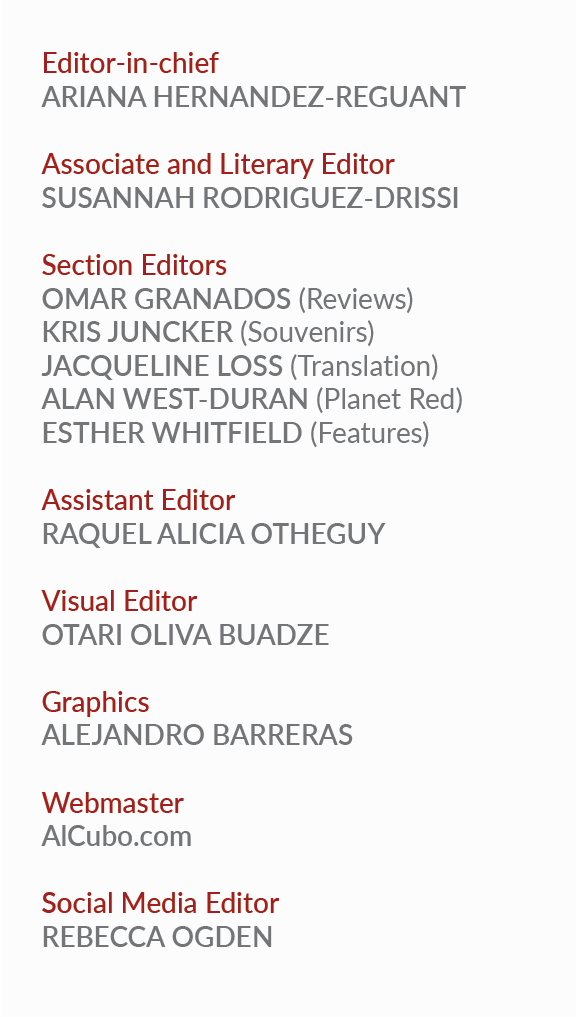In an island whose future seems precarious, where ‘transition’ haunts the psyche of its citizens in an intransigent fashion, the art of performance has become a crucial venue of expression since its emergence in the 1980s—if by expression, of course, we entail resistance, civic engagement, and symbolic annihilation. Comprising subcategories such as music, poetry, visual art, and political activism…, this figurative platform serves artists and intellectuals in contemporary Cuba as a vehicle to exercise their ‘voice’ in every meaning of the word, which sometimes translates into the creation of spaces for iconoclasm, heterodoxy, and the much dreaded underground dissidence. It is not surprising, hence, that Coco Fusco—in her didactic book Dangerous Moves: Performance and Politics in Cuba (2015)—attempts to articulate a crisp archeology of the conceptualization of such an insular subculture from its origins until present times, mapping the majority of the performative experiments arisen within the post-Fidelist era vis-à-vis an illustrated account of the history of this art.
The central purpose of Dangerous Moves, I would strongly argue, consists in teasing out the parasitic symbiosis that still lurks between politics and culture, or state rhetoric and artistic emancipation, in the archipelago today, which represents an emphasis (perhaps implicit) on the abstruse dynamics that derive from the intersection of public truth, private ethics, and politics of agency and censure in the Caribbean nation. Unquestionably, Fusco, as one of the most influential scholars in matters related to the national art milieu, concretizes—once again—an investigation both theoretically constructive and empirically innovative, one that can only be perceived as a brilliant confluence of a poetics of memory and theories of subjectivity, silence and secrecy, and discursive interpretation.
Dangerous Moves, in an effort to seek out the subtexts hidden underneath the cultural landscape of Cuba, excels at identifying some patterns of conduct produced by the constant negotiation between revolutionary ideology and deviant experimentation, that is, between state regulation and artistic survival–unveiling in doing so a specific leitmotif that seems to pervade the national scenery: the body. This recurrent theme operates by opposing, almost consistently, two discordant species: the performative body (or that of the artist) and the political body (that of the state). However, in a war of biopolitical discourses, what are the implications of using the human body as an aesthetic signifier of discontent? Or, maybe more importantly, how do the tensions emerging from the clash between the natural and the institutional alter power dynamics in contemporary Cuba?
In a clear way, the Cuban body—or at least the performative one—represents a symbol of social disenchantment that challenges authority through metaphors of self-degeneration, not to mention that it also inverts the aforestated power dynamics as the allegorical becomes physical, as this very ‘official’ symbol of resistance becomes re-functionalized to mean a different kind of rebeldía (now coming from another group of iconoclasts that gainsays the ‘original’ rebeldes). These circumstances, impulsively, makes us think that the corporeality exuded in many of the performances covered by Fusco is somehow linked to the decentralization of all paradigmatic images created and imposed by governmental institutions on the island; and, of course, this is to say, in part, that the performative body: flesh, pain, abjection, physical sacrifice…, symbolizes a somatic manifestation of the political one: orthodoxy, repression, hegemony, ethical implantation…
As a final note then, I can only affirm that Fusco’s Dangerous Moves represents a vindication of a certain behavioral paradigm that, animated by moral codes of dissidence, seeks to exemplify a conduct (of rebeldía) for any group of (art)ivists that pretends to subvert the official power. Likewise, in terms of artistic ‘genre,’ it is worth highlighting that, by delving into other performative works of contemporary Cuba, this book acts as a ‘performative’ essay that expands the boundaries of this art as to what it means to ‘perform’ on the island today, playing with its structure and purpose in manner as aberrant as the content it encloses. At last, it becomes evident that Fusco’s own performance constitutes another innovative channel to criticize and reject, as many subjects of her book do, the sacred images and cultural norms of a country whose institutional conservativism seems to be arriving to an end; in other words, Dangerous Moves, indeed, moves dangerously.


